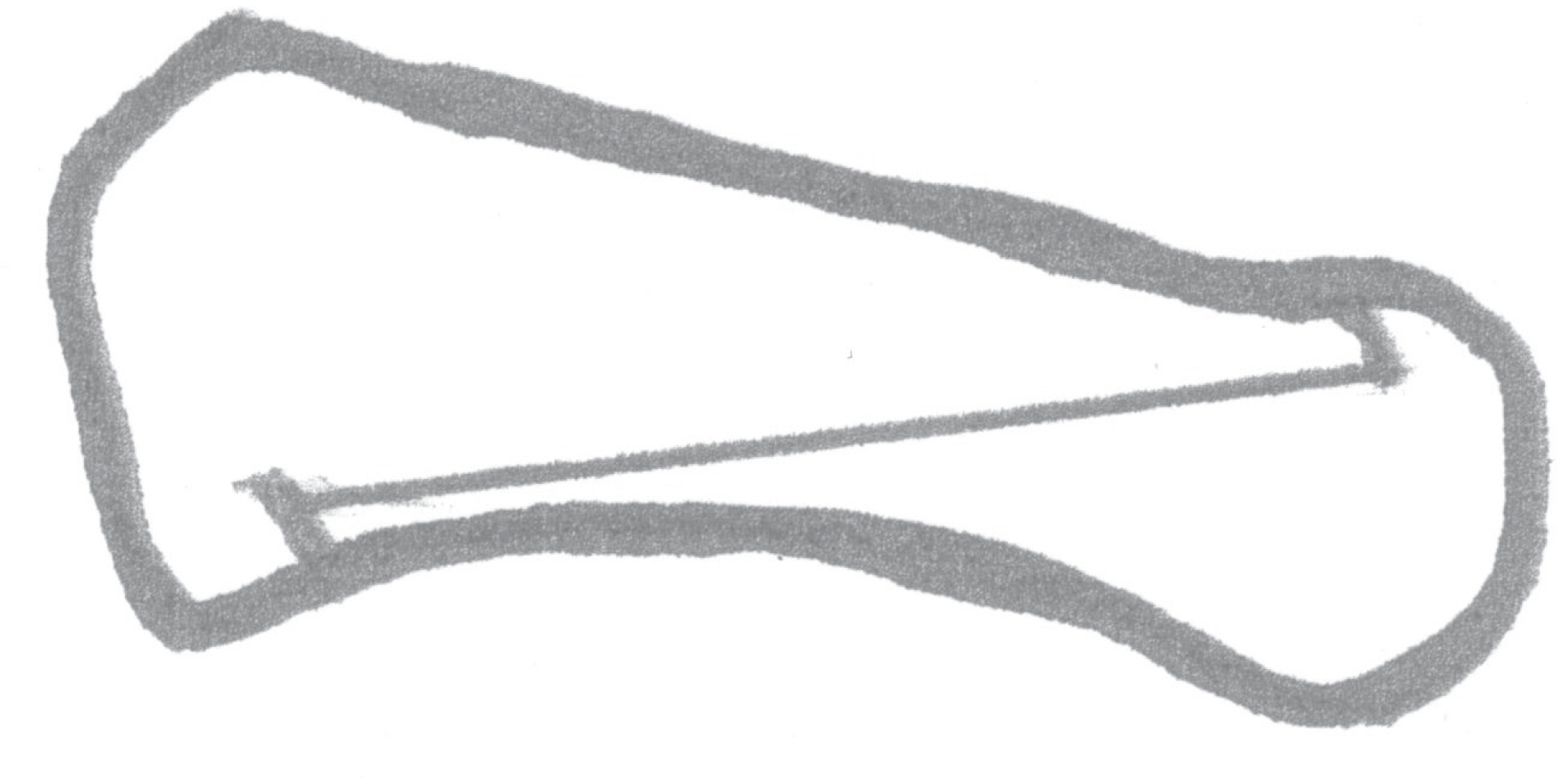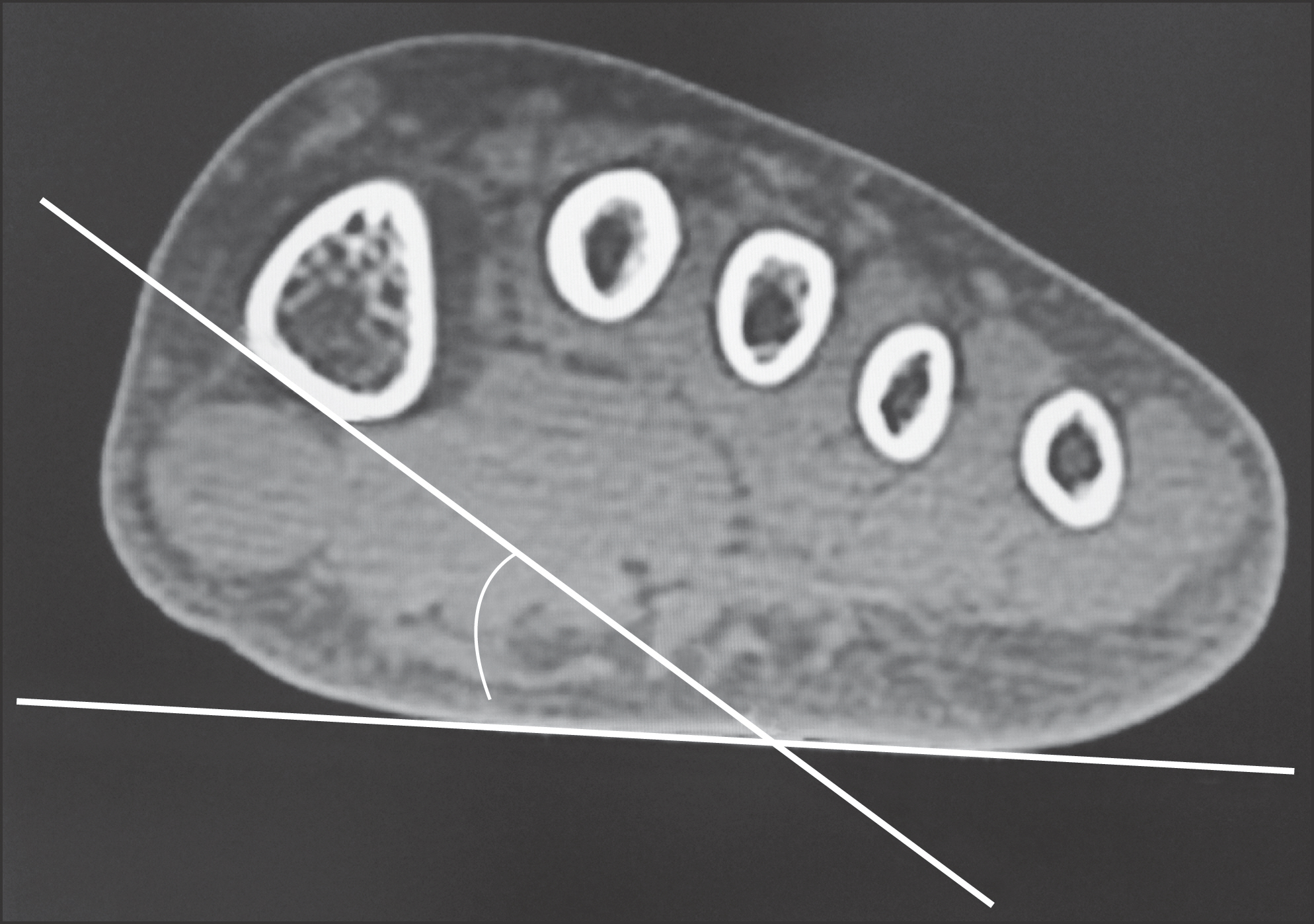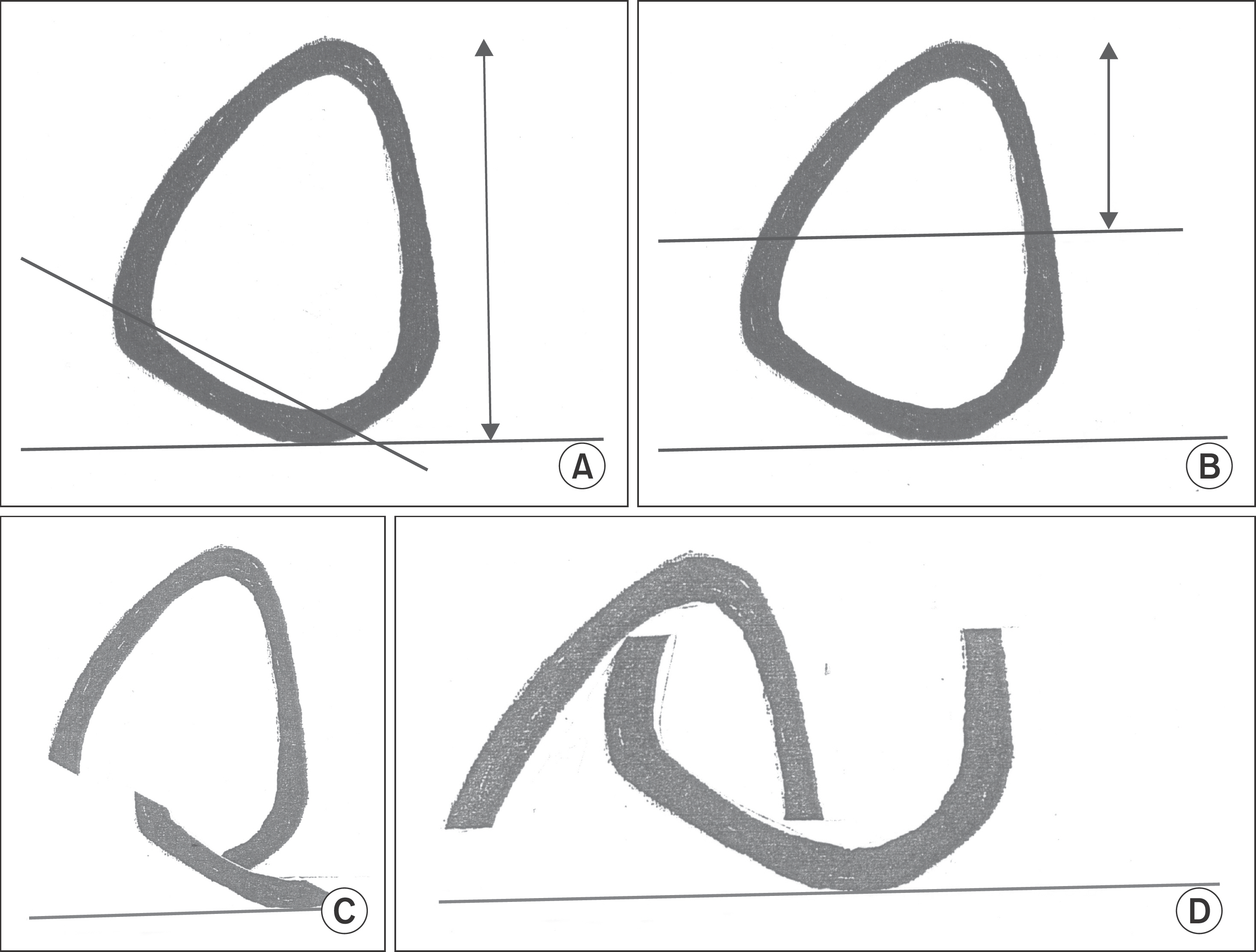J Korean Foot Ankle Soc.
2014 Dec;18(4):178-182. 10.14193/jkfas.2014.18.4.178.
Complications of Scarf Osteotomy for Hallux Valgus
- Affiliations
-
- 1Department of Orthopedic Surgery, Pohang St. Mary's Hospital, Pohang, Korea. scarpel@gmail.com
- KMID: 2181638
- DOI: http://doi.org/10.14193/jkfas.2014.18.4.178
Abstract
- PURPOSE
The purpose of this study was to evaluate the frequency of troughing and stress fracture, which are the major complications of scarf osteotomy, and to suggest methods to prevent these complications.
MATERIALS AND METHODS
We reviewed 243 cases of 137 patients treated with the scarf osteotomy for hallux valgus from January 2005 to December 2012. The mean follow-up period was 2.8 years. During the scarf osteotomy, a long oblique longitudinal osteotomy was performed in order to decrease the possibility of troughing and stress fracture. Radiographs of lateral view of the foot were obtained and the thicknesses of the first metatarsal base at the sagittal plane were measured and compared.
RESULTS
There was no troughing during fragment translation and screw fixation intraoperatively. Radiographs of lateral view of the foot taken preoperatively and at the last follow-up showed that the mean thickness of the first metatarsal was 22.4 mm preoperatively and 21.6 mm at the last follow-up, with a mean difference of 0.8 mm. And no stress fracture was observed.
CONCLUSION
To prevent troughing and stress fracture, a long oblique longitudinal cut, parallel to the first metatarsal plantar surface, was performed, making both ends of the proximal segment truncated cone-shape, and securing the strong bony strut of the proximal segment. No troughing or stress fracture was experienced with scarf osteotomy.
Keyword
Figure
Cited by 2 articles
-
Comparative Analysis of the Results between the Early Period and the Midterm Period of a Single Surgeon’s Experience in the Treatment of Hallux Valgus Using Scarf Osteotomy
Yeong-Hyeon Lee, Il-Hyun Nam, Tae-Hun Lee, Gil-Yeong Ahn, Yong-Sik Lee, Sung-Hyun Hwang, Kyung-Jin Lee
J Korean Foot Ankle Soc. 2020;24(4):135-141. doi: 10.14193/jkfas.2020.24.4.135.Rotational Long Scarf Osteotomy on Hallux Valgus in Elderly Patients with Osteoporosis
Il Hyun Nam, Dae Geun Kim, Young Hoon Lee, Dong Hyun Lee, Young Duk Choi, Hee Hyung Lee
J Korean Orthop Assoc. 2018;53(5):415-420. doi: 10.4055/jkoa.2018.53.5.415.
Reference
-
1.Chung JW., Jung HW., Chu IT. Modified scarf osteotomy for hallux valgus with lesser metatarsalgia. J Korean Foot Ankle Soc. 2008. 12:134–9.2.Park HW., Kim SJ. Treatment results of hallux valgus deformity by parallel-shaped modified scarf osteotomy. J Korean Foot Ankle Soc. 2012. 16:123–7.3.Kristen KH., Berger C., Stelzig S., Thalhammer E., Posch M., Engel A. The SCARF osteotomy for the correction of hallux valgus deformities. Foot Ankle Int. 2002. 23:221–9.
Article4.Schneider W., Csepan R., Knahr K. Reproducibility of the radiographic metatarsophalangeal angle in hallux surgery. J Bone Joint Surg Am. 2003. 85:494–9.
Article5.Smith AM., Alwan T., Davies MS. Perioperative complications of the Scarf osteotomy. Foot Ankle Int. 2003. 24:222–7.
Article6.Kramer J., Barry LD., Helfman DN., Mehnert JA., Pokrifcak VM. The modified Scarf bunionectomy. J Foot Surg. 1992. 31:360–7.7.Barouk LS. Scarf osteotomy for hallux valgus correction. Local anatomy, surgical technique, and combination with other forefoot procedures. Foot Ankle Clin. 2000. 5:525–58.8.Jones S., Al Hussainy HA., Ali F., Betts RP., Flowers MJ. Scarf oste-otomy for hallux valgus. A prospective clinical and pedobaro-graphic study. J Bone Joint Surg Br. 2004. 86:830–6.9.Coetzee JC. Scarf osteotomy for hallux valgus repair: the dark side. Foot Ankle Int. 2003. 24:29–33.
Article10.Steck JK., Ringstrom JB. Long Z-osteotomy: a review and new modification to correct troughing. J Foot Ankle Surg. 2001. 40:305–10.
Article11.Weil LS. Scarf osteotomy for correction of hallux valgus. Historical perspective, surgical technique, and results. Foot Ankle Clin. 2000. 5:559–80.12.Zygmunt KH., Gudas CJ., Laros GS. Z-bunionectomy with internal screw fixation. J Am Podiatr Med Assoc. 1989. 79:322–9.
Article13.Schoen NS., Zygmunt K., Gudas C. Z-bunionectomy: retrospective long-term study. J Foot Ankle Surg. 1996. 35:312–7.
Article14.Duke HF. Rotational scarf (Z) osteotomy bunionectomy for cor-rection of high intermetatarsal angles. J Am Podiatr Med Assoc. 1992. 82:352–60.
Article15.Miller JM., Stuck R., Sartori M., Patwardhan A., Cane R., Vrbos L. The inverted Z bunionectomy: quantitative analysis of the scarf and inverted scarf bunionectomy osteotomies in fresh cadaveric matched pair specimens. J Foot Ankle Surg. 1994. 33:455–62.16.Crevoisier X., Mouhsine E., Ortolano V., Udin B., Dutoit M. The scarf osteotomy for the treatment of hallux valgus deformity: a review of 84 cases. Foot Ankle Int. 2001. 22:970–6.
Article17.Berg RP., Olsthoorn PG., Pöll RG. Scarf osteotomy in hallux valgus: a review of 72 cases. Acta Orthop Belg. 2007. 73:219–23.18.Barouk LS. Drawbacks with this type of hallux valgus surgery. Barouk LS, editor. editor.Forefoot reconstruction. 2nd ed.Paris, New York: Springer;2005. p. 94–105.
- Full Text Links
- Actions
-
Cited
- CITED
-
- Close
- Share
- Similar articles
-
- Treatment Results of Hallux Valgus Deformity by Parallel-Shaped Modified Scarf Osteotomy
- Scarf Osteotomy for the Treatment of Recurred Hallux Valgus
- Short Scarf Osteotomy for Moderate Hallux Valgus
- Modified Proximal Scarf Osteotomy for Hallux Valgus
- The Effect of Derotational Closing Wedge Akin Osteotomy for the Treatment of Hallux Valgus with the Pronation of Great Toe





